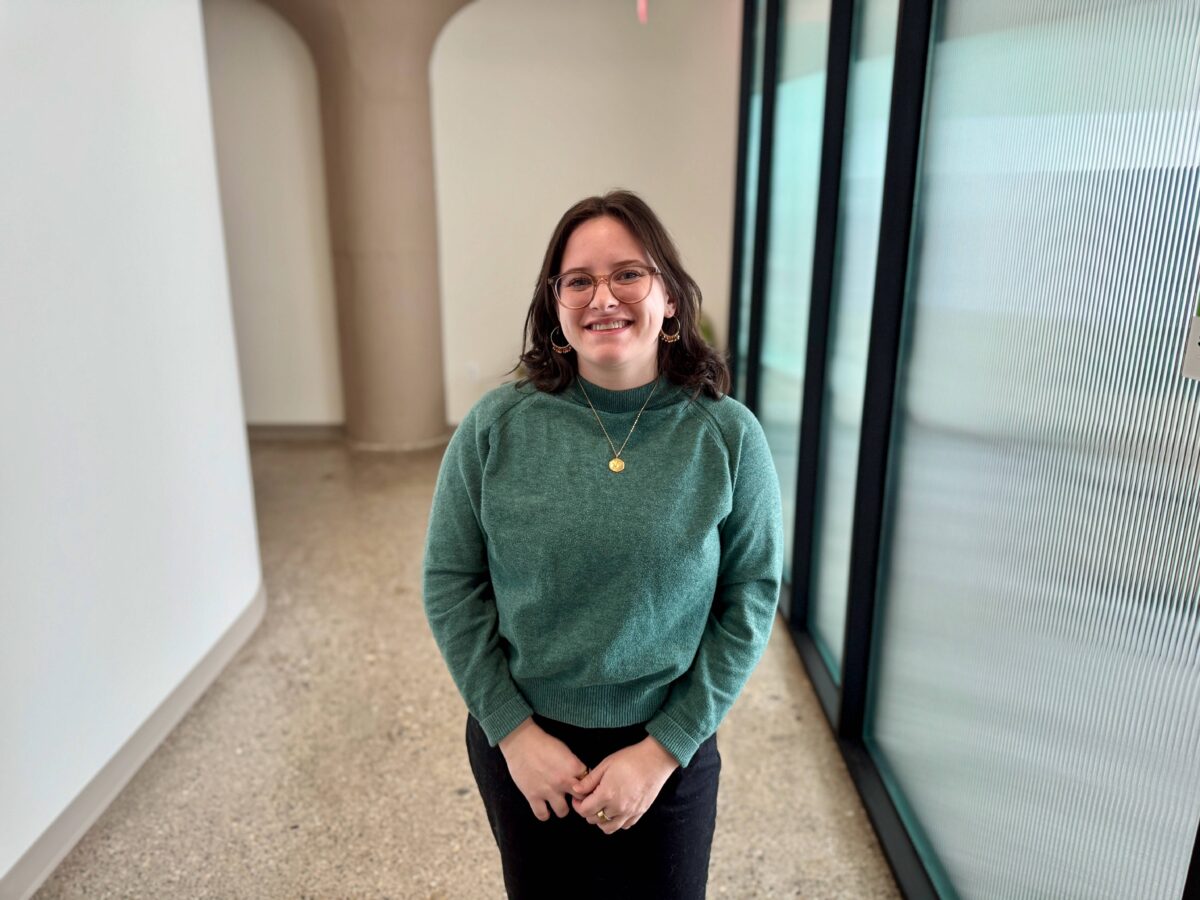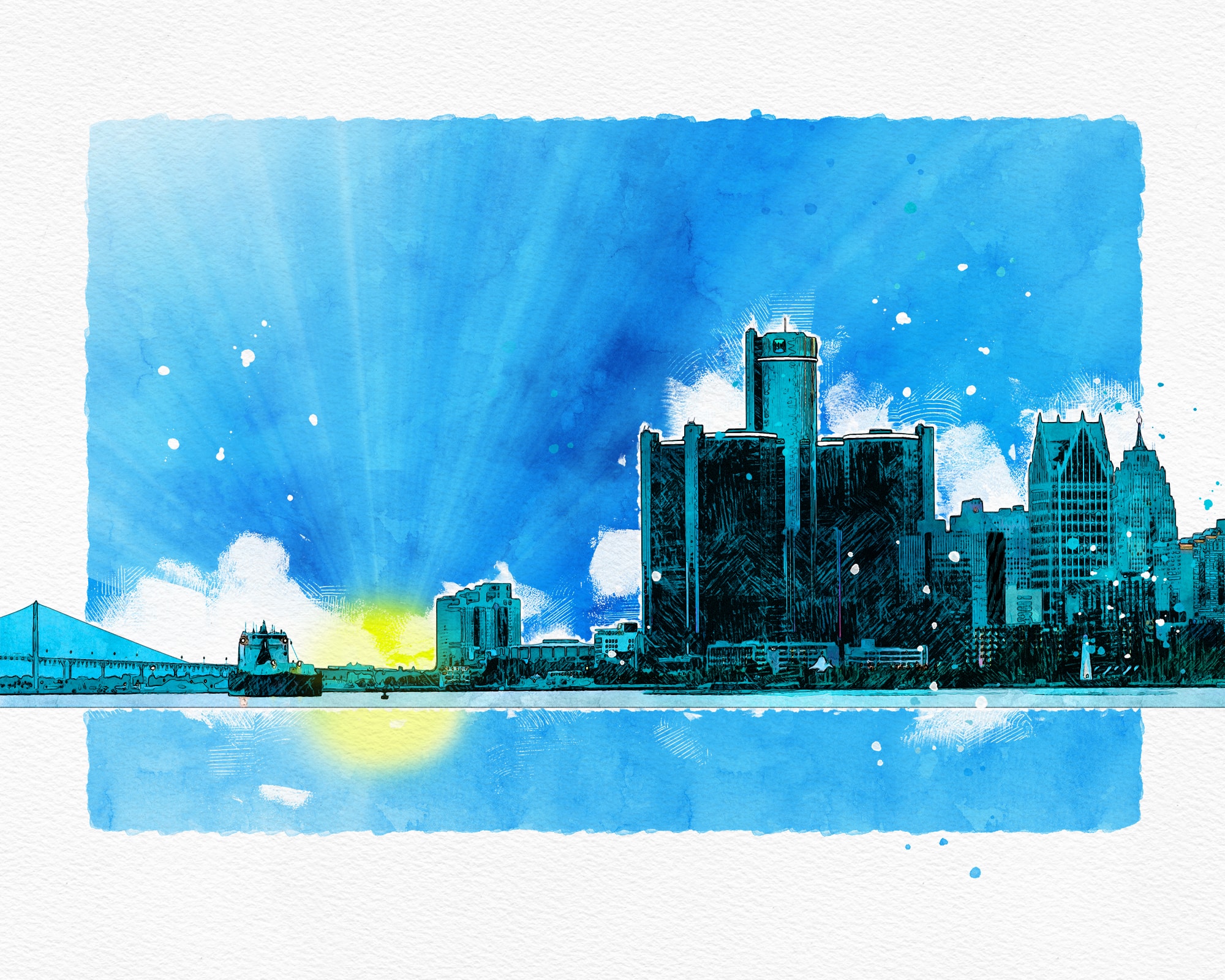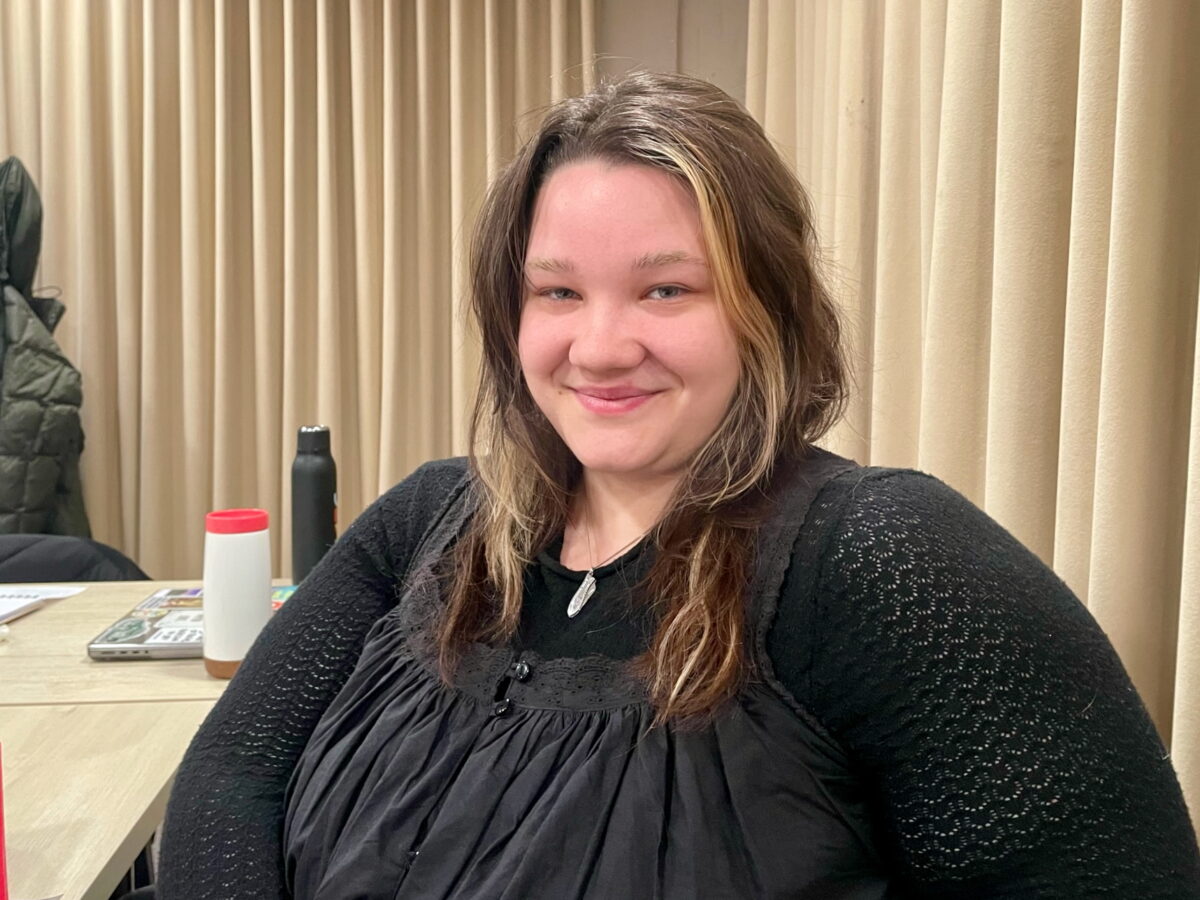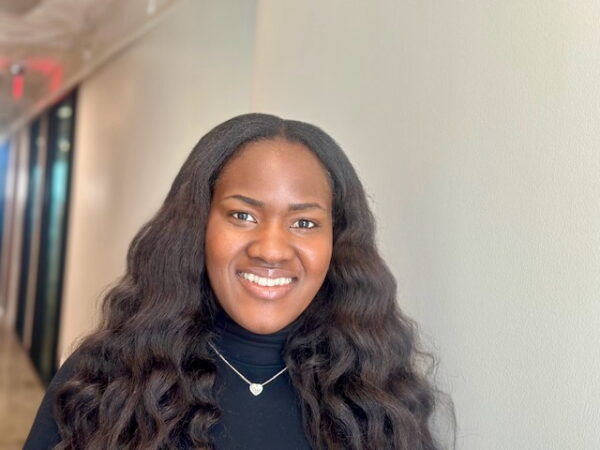Overview:
-Shayla Zimmerman is working on a watershed management plan for Detroit's east side.
-She names the late Grace Lee Boggs as one of the biggest inspirations for her environmental work.
-Zimmerman says her ultimate goal is a sustainable community.
This story is published as part of Planet Detroit’s 2025 Spring Neighborhood Reporting Lab, supported by The Kresge Foundation, to train community-based writers in profile writing. This year’s participants will focus on highlighting grassroots leaders driving positive change in Metro Detroit.
Shayla Zimmerman is an environmental advocate who started her journey at the age of 15 with a focus on community organizing and nonprofit empowerment.
Zimmerman works as a program officer at the Institute for Sustainable Communities, where she oversees the execution of the EPA’s Environmental Justice Thriving Communities grantmaking. She is an alumna of Barack Obama’s National Change Collective Fellowship and the Detroit Equity and Action Lab Racial Equity Fellowship.
Can you tell me a little bit about yourself?
My name is Shayla Zimmerman. I grew up on the east side of Detroit. I still live there, about 10 minutes from my grandparents’ house. I currently work at an environmental justice organization called the Institute for Sustainable Communities, and I’ve been very involved in watershed management groups, flooding task forces, and things like that.
I am very passionate about water and the structural environment. Overall, the things that I’ve been a part of contribute to improving my community.
Is there anything that you are working on right now when it comes to improving water management?
Yeah! We’re developing a watershed management plan, actually on the east side of Detroit, because we don’t have one. This is interesting, because most areas, like Dearborn, already have one, except the east side of Detroit and other places like North End. We’re developing a plan on how to manage the watershed a little bit better.
In my full-time job, I’m working on a grant to help distribute funds to other organizations, for example, the environmental justice grant through the Environmental Protection Agency.
What has inspired your interest in environmental justice?
In 2014 my grandparents’ house flooded. So that was what really sparked my interest in understanding water, flooding, storms, and climate change — understanding how all of those things impact one another. I’ve always been interested in gardening, but I’m not so good at gardening. Also, learning about infrastructure really helped spark the passion of wanting to make our community better. So I would do cleanups in high school, clean up the lake, and clean up trash and other waste. So I think all of that really helped me on the trajectory of where I am now.
MORE FROM THE NEIGHBORHOOD REPORTING LAB
Larissa Diem changed careers and moved to Detroit. She has a new spiritual home too.
Larissa Diem transitioned from a fashion major to an HR role at a hospital, all while sharing her creative insights through zines and her newsletter, “Goose Watch.” Meet Planet Detroit’s 2025 Neighborhood Reporters in this Q&A series, written by Neighborhood Reporters.
Southwest Detroit native grew up with ‘no roadmap’ in school. Now he aims to empower students like him.
Oscar Chapa, a Southwest Detroit native, is an academic specialist at the Academy of Americas middle school and is pursuing a master’s degree in Educational Leadership and Policy. Meet Planet Detroit’s 2025 Neighborhood Reporters in this Q&A series, written by Neighborhood Reporters.
Trayvon Martin’s death changed everything for Aderonke Ibironke. She shares her approach to creativity, advocacy.
Aderonke Ibironke, a Detroit-born creative, leverages writing and music to advocate for social change, while serving as a policy analyst for the City of Detroit. Meet Planet Detroit’s 2025 Neighborhood Reporters in this Q&A series, written by Neighborhood Reporters.
What is your ultimate goal with this work?
I think my dream would be to have a sustainable community. So this applies to our community and other communities that have been disinvested. We don’t have to worry about being flooded. We don’t have to worry about fires devastating communities. We don’t have to worry about climate change impacts. And having a nice community where we don’t have to stress about the infrastructure. We can simply just try to live our lives.
Who do you think is your biggest inspiration right now?
I have so many inspirations. I always have Grace Lee Boggs. She has been one of my biggest inspirations since I was in high school and is why I have become a baby activist. She promoted community care and activism in our communities and I found that to be really important. So I’m always trying to live through her and bring her into all the work that I do.
If you could give a piece of advice to someone who is trying to get into the environmental advocacy and justice world, what would the piece of advice be?
I would recommend starting at home, meaning in your community, if you notice something that is unsafe — or if you see a park, for example, where kids are scared to play because there’s glass or waste.
That is a good place to start. You can ask the critical question first. For example, Why is there glass? Why is this happening in my park? Why can’t kids play? And then you’ll realize that this is connected to policy. This is connected to funding or lack of funding. You can start by going and cleaning up the glass in the park. It is also important to understand how to sustain a clean park by finding the root of the issue.





